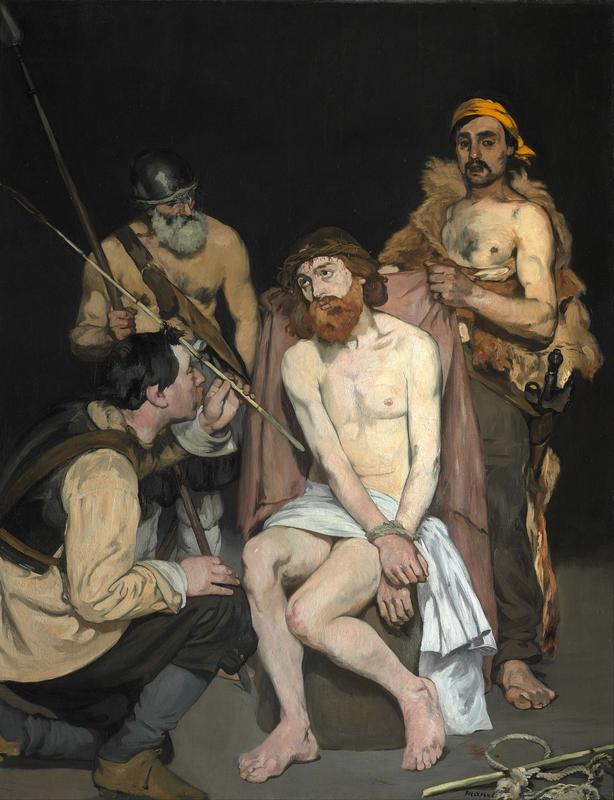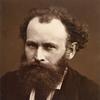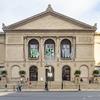More about Jesus Mocked by the Soldiers

Contributor
As a man who was regularly and dramatically rejected by the very people he set out to serve, it makes sense that Jesus Christ would be a major icon for Édouard Manet.
Manet faced rejection not only throughout his artistic career, but throughout his whole life. As a teenager he had to reorient his dreams after twice failing the entrance exam for naval training twice. His muse, Berthe Morisot, instead of running away with him, chose to marry his brother. His father rejected his career choices, wanting his son to study law. And, of course, his big break as an artist came when he displayed his Luncheon in the Grass at none other than the Salon des Refusés (Salon of the Rejected).
His paintings of Jesus in particular were a major point of contention. Starting with The Dead Christ with Angels, critics denounced the painting due to its realistic and unsettlingly cadaverous depiction of Jesus. At the time, Romanticism was in style, and so while normally images of Jesus are welcomed, this one lacked the necessary style that would have made it popular. You could argue that this painting, made the following year, was a response to those criticisms.
Whereas a lesser artist may have given in to the pressure, Édouard Manet only doubled down and stuck with his particularly realistic style, in turn rejecting the artistic movement that had long been rejecting him. A bold move, but apparently the right one, as now the man is not only known as a great artist, but also as the grandfather of the Realism movement that would bloom near the end of the 19th century.
Sources
- Rabinow, Rebecca “Édouard Manet (1832–1883)” The Met 10/04 https://www.metmuseum.org/toah/hd/mane/hd_mane.htm
- Smith, Hazel “Berthe Morisot and Édouard Manet: Painters in Paris” France Today 01/07/19 https://www.francetoday.com/learn/history/berthe-morisot-and-edouard-ma…
- Web Contributor “Shock of the Nude” PBS viewed on 01/22/20 https://www.pbs.org/wgbh/cultureshock/beyond/manet.html
- Website Contributor “The Dead Christ with Angels” The Met viewed on 01/22/20 https://www.metmuseum.org/toah/works-of-art/29.100.51/
Featured Content
Here is what Wikipedia says about Jesus Insulted by the Soldiers
Jesus Insulted by the Soldiers is an 1865 oil on canvas painting by Édouard Manet, his last religious work. It is now in the Art Institute of Chicago, to which it was left in 1925 by James Deering, heir to the Deering Harvester Company (International Harvester).
According to Théophile Thoré-Burger, the painting was based on Anthony van Dyck's Christ Crowned with Thorns (destroyed in Berlin in 1945, though a version of it survives in the Princeton University Art Museum). Other authors argue it draws on Titian's 1542–43 work of the same title, now in the Louvre. In 1959 Michel Leiris noted its similarities to an engraving by Schelte Adams Bolswert, whilst Theodore Reff saw it as influenced by Ecce homo (Madrid, Prado Museum) or Christ Mocked by the Soldiers, both by Van Dyck. Julius Meier-Graefe also noted the influence of Diego Velázquez on the work and Ann Coffin Hanson that of Hendrick ter Brugghen.
This work and his The Dead Christ with Angels (1864) were adjudged violent and insufficiently academic by art critics and the public. Paul de Saint-Victor referred to the 1865 work as "the horrible Ecce Homo by Monsieur Manet". Manet's usual critics such as Bertall, Cham, André Gill, Draner, Stop and Albert Robida also attacked the work in Le Charivari, the Journal amusant , Le Monde pour rire, L'Éclipse (replaced by the La Lune), Le Tintamarre, La Vie parisienne and several other publications.
In his 1872 inventory of his works, Manet valued the work at 15,000 francs. It was put on sale in 1883 but was withdrawn from the sale before finally being bought from Léon Leehoff by the art dealers Boussod and Valadon in 1893. According to Tabarant, it was Durand-Ruel who bought it from Manet's widow, but Durand-Ruel's records show he bought the work jointly with Jean-Baptiste Faure in 1894, Faure exhibited it in New York and finally Durand-Ruel sold it for 22,000 francs to James Deering.
Check out the full Wikipedia article about Jesus Insulted by the Soldiers












